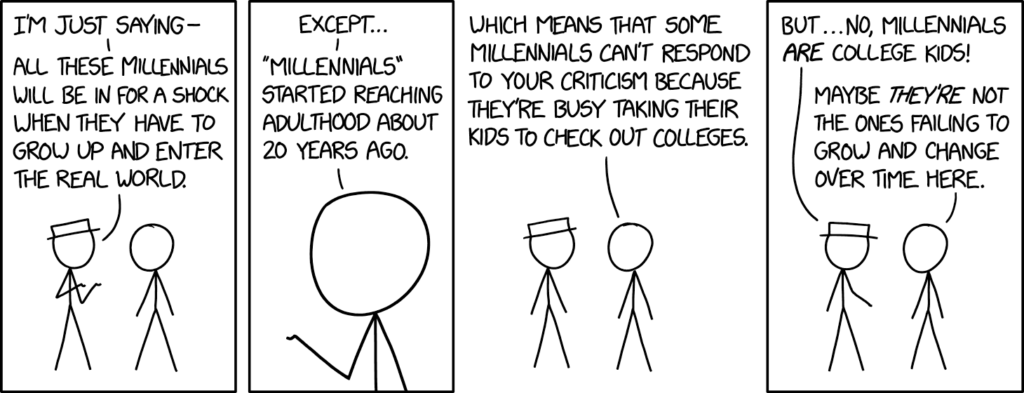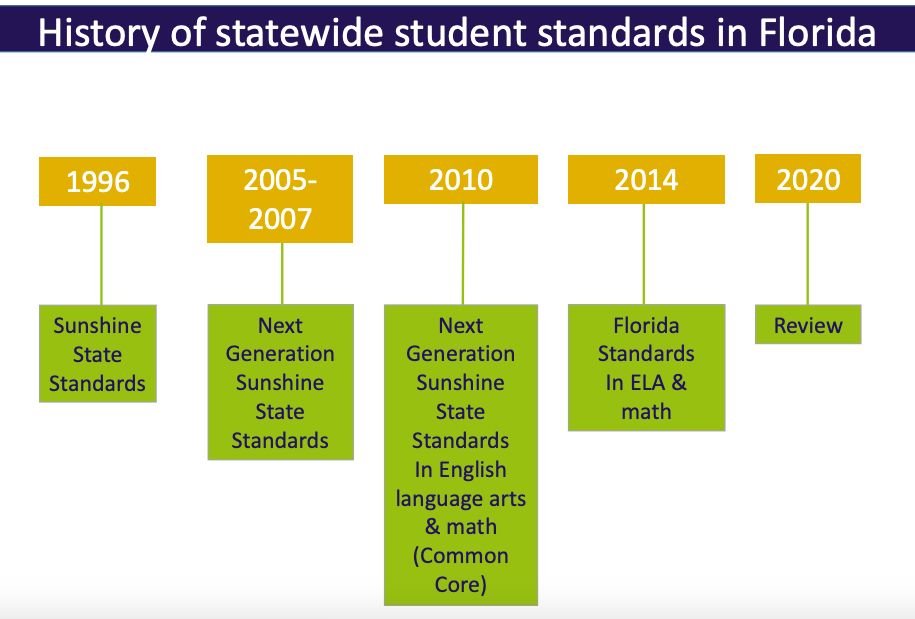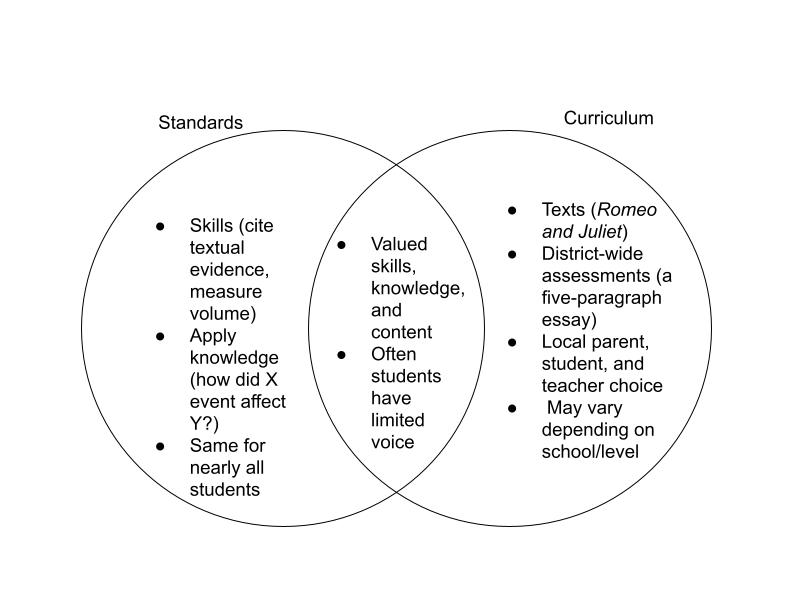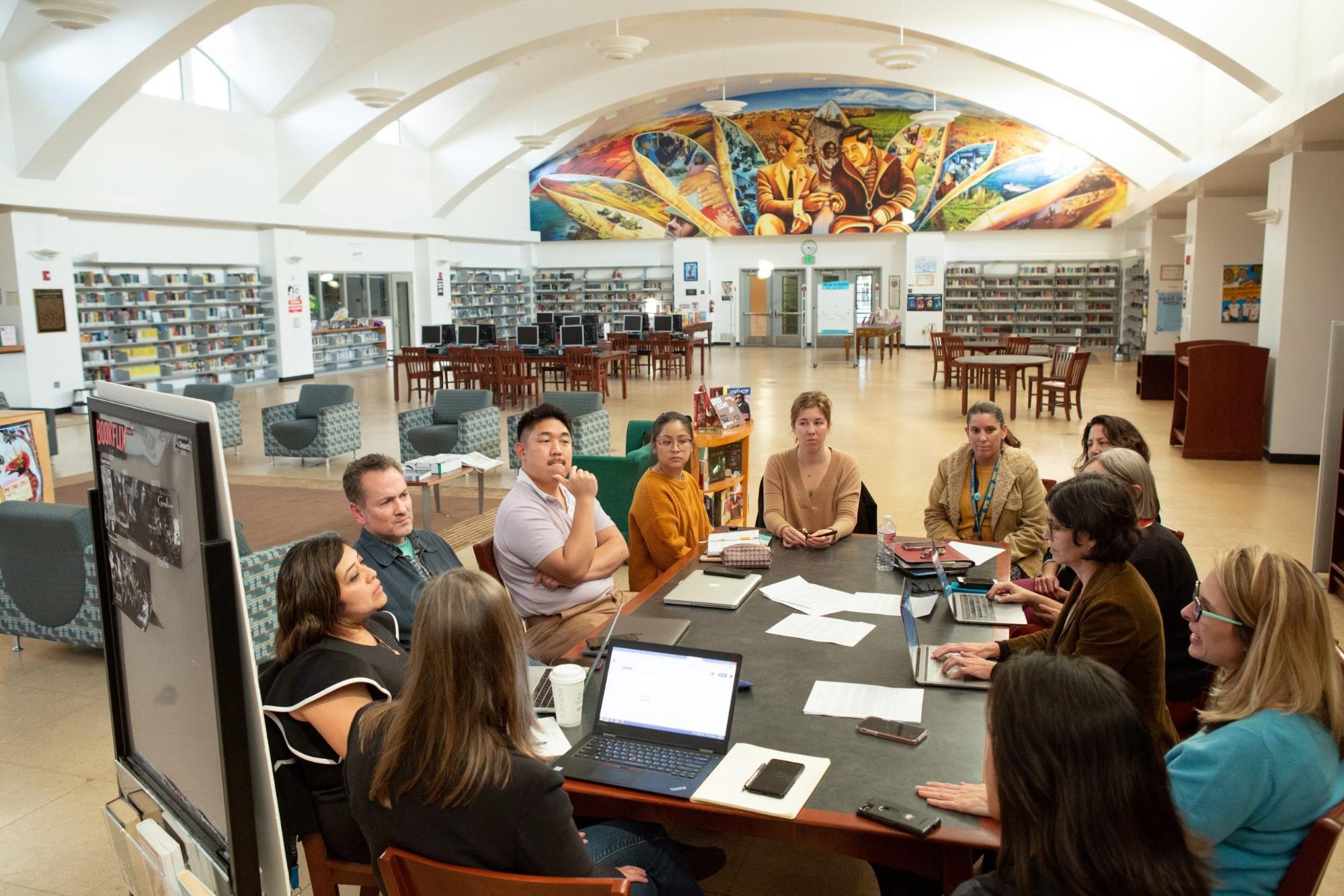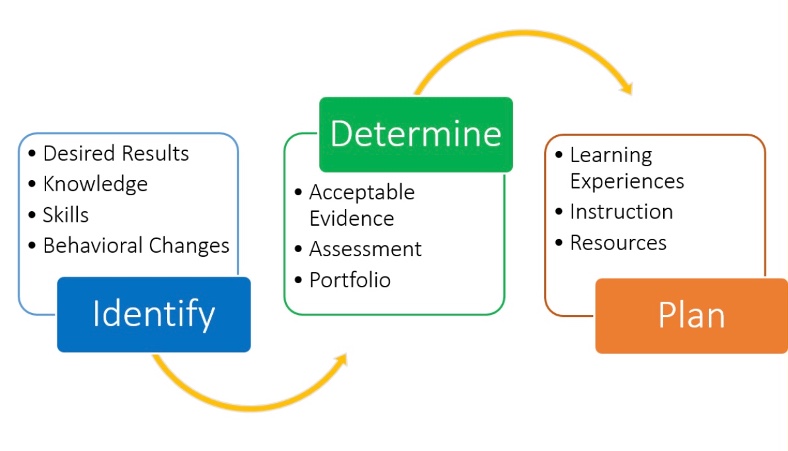1 Chapter 1: Overview of Planning
- Purpose of Education
- Why do we teach?
- Planning: Why do we plan?
- Backwards Design
Before We Read
Before reading, spend some time thinking about the different decisions that teachers make every day as they plan their classes. The materials teachers choose, how they organize a class, what is emphasized or not, and what choices are offered to the students all shape the student experience. To be an engaged teacher, it is important to build reflective practices and make informed and deliberate instructional choices. Think about your favorite experiences in school. What choices did the educators make that contributed to your experience?
Questions for Consideration
As you read, consider these essential questions: What are the goals of education? How does the experience of the students impacted by what is written or missing in the curriculum? What hidden lessons are we teaching students? In what ways are we, as educators, shaping our schools and communities through our curricular and instructional choices?
The Purpose of Education
The purpose of education is a fundamental question that guides the design and implementation of educational programs. However, there is no single answer to the question of what the purpose of education is and what curriculum should be. In this chapter, we will explore three major categories of curriculum that reflect different emphases on the purpose of curriculum: the learner-centered curriculum, the society-centered curriculum, and the knowledge-centered curriculum.
As you read these next sections, think about your definition of education. While it is practical to categorize educational approaches, remember that these emphases are not mutually exclusive or incompatible. In practice, educators adopt a combination or balance of approaches.
Why Teach?
Why do teachers teach is a rather simple question. However, the question What is a teacher?, must be addressed first. Merriam-Webster’s definition of a teacher is “one whose occupation is to instruct” (Merriam-Webster, 2008, para. 1). While this definition showcases one aspect of being a teacher, teachers offer so much more to the class than just instructing students, they offer themselves. A better, more collective definition of a teacher is someone who “yearns to help children learn, watch them grow, and make a meaningful difference in the world” (Teacher Support Network, 2007, para. 2). This definition is most likely the main reason why individuals pursue teaching as a career. As a teacher, one can touch the hearts of the young and open their minds to tap their thirst for knowledge.
The Road Ahead
Becoming a teacher is a lengthy process. The process is different depending on the state. For example, in the State of Michigan, you will have to obtain a Bachelor’s Degree, as well as pass certification tests. In Florida, there are several pathways to becoming a certified teacher. However, most involve having a Bachelor’s Degree and passing a certification exam, especially in the area you plan to teach.
For more information on Certification Access: Florida Educator Certification
Planning and Curriculum is one of the required courses that you must take for the Elementary Education Program at the University of West Florida. If you have not done so already, you will need to decide on the level you wish to teach, Elementary or Secondary, as well as your academic subject major(s) and minor(s).
Teacher’s Salaries Across the US
Teaching often requires long hours and comes with a flat rate of pay. Teacher salaries depend on the state and school district in which the teacher is instructing. Private schools, parochial schools, and charter schools, in general, tend to have lower pay scales. The reason is they may not have the same revenue base as the public schools. However, educators may choose to teach in these schools because of the schools’ philosophy, religious preferences, or a variety of other reasons. Regardless of the reason, most educators will agree they went into teaching because they have the desire to spread knowledge, and/or to watch children reach their full potential.
Passion
There are multiple factors in deciding to become a teacher. For one, it is a healthy alternative to other professions. Research has found that about twice as many teachers truly enjoy their work, as opposed to those who have careers in marketing, IT, and accounting (TDA, In Summary, para. 1). Work is not truly work if it is enjoyed. A teacher’s passion, along with the intrinsic motivation to be lifelong learners, can directly affect their students by influencing the motivation, engagement, and energy within the classroom. This same passion helps teachers try new approaches to teaching and learning in order to enhance and support the learning of all of their students.
Love
Beyond passion, another reason that teachers teach is simply for the love of teaching. As stated by (Liston & Garrison, 2003) Love is a “creative, critical, and disruptive force in teaching and learning.” A teacher who loves his or her job will be a better teacher and have a greater impact on the students he or she influences. Classroom efforts to manage, instruct, and direct groups of twenty to thirty students frequently require feelings for others and an intuition that connects teacher to student and to subject matter (Liston & Garrison, 2003). For the new teacher, the multiple tasks entailed in this activity can be overwhelming. (Liston & Garrison, 2003) For the experienced teacher, they can seem almost unconscious (Liston & Garrison, 2003). Most teachers truly have passion for what they do, but they also have a love for it as well.
Creativity Is Key
“Every person is unique and the challenge is to find fun ways to guide individuals to learn and understand what they are interested in learning” (B. Anders, personal communication, February 2, 2008). There are many ways to be creative in the classroom, whether it is using projects, videos, and presentations, but what if the creativity stemmed from the teacher?
Being creative is important in teaching, for the students are the audience. No one knows this better than entertainers, who are creative and use their ingenuity to bring to life rather dull aspects of education. This in and of itself is talent, and there are those who devote themselves to that. Paul Keogh, a Modern Languages teacher, had always aspired to be an entertainer, however, he chose teaching as his profession instead. He does not regret this choice; he’s always got someone to perform for. He equated teaching to entertainment, but more importantly, he remarks, “I love to see them growing personally, socially and academically” (TDA, Paul Keogh, Modern Languages teacher, para. 3). This statement itself encompasses the point of education, for there cannot be growth without learning.
The Rewards
The rewards received by being a teacher are different than those received by someone like a salesman, for example. If a salesman is doing well, he makes his quota, and he then earns his monetary bonus. It is possible that he receives a plaque to hang behind his desk stating that he was the number one salesman for this period in time. Teachers’ rewards are not so tangible, but rather, “They are rewarded more by witnessing their students succeed and follow their dreams than by any plaque “ (Daily Egyptian, 2005, para. 7). A group of school teachers who had participated in a study that looked into why teachers taught in high challenge schools, jointly agreed that what their students achieve under their instruction was reward enough for all the time that they devote to their students. “Student achievement was another reward the teachers discussed as a reason for staying. When their students were successful, the teachers felt incredibly rewarded.” (Morris, 2007, pg 58). The reward teachers receive is a feeling, and feelings are more special and memorable than gold and silver plaques hung stoically on a wall proclaiming an individual’s success. For teaching, it is not about what the teachers can achieve, but what they can get their students to achieve, and through their students, reflects a teacher’s greatest achievement.
Why do teachers teach?
To address the opening question, “Why do teachers teach?”, the answer is simple; “They teach for the love of children and to contribute to the well-being of all of us” (Teachers are Important, 1998, para. 4). It is something inside them. It is a drive, a force, a passion, a talent that they wish to dispel upon his or her students in order to watch them succeed. Choosing to be a teacher is not for the money, as a teacher’s monetary compensation is hardly adequate given all that they give to their students. Becoming a teacher is almost like heeding a calling. It is not for the light at heart, but rather, for those who love children and people, who have a passion for education, and who love to share in that passion. Teachers yearn to see the burning desire to learn, and love to see the excitement of discovery, and that, is why teachers teach.
What Makes a Good Teacher?
There are many qualities and characteristics that make up a good teacher. Engaging, caring, and innovative are some things that may come to mind. According to Dr. Richard M. Reis, a professor and executive director at Stanford University, the top priority of teachers should be that they want to be good teachers. In his article, he stated that as teachers, “we respect students who really try, even if they do not succeed in everything they do, so they will respect us, even if we are not as good as we want to be” (Reis, 2007). Your future students will know that you want to be a good teacher if you strive to become one. There are many opinions on what goes into a good teacher, but only you can implement the characteristics in your own teaching career.
One of these many characteristics is developing a positive disposition. Disposition is the attitudes and beliefs we have about learning. Your disposition is evident in your philosophy of education. One very important disposition to have is the belief that all students can learn.You must truly believe that every student can learn! Of course, what they learn, how they learn, and the rate at which they learn will vary, but they ALL can learn.
When we have a positive disposition regarding learning, we can then foster that disposition in our students. We want them to develop a “Growth Mindset”. This is the belief that they can learn anything, but they recognize it will take time and work to do so. We want them to be strong and never give up. We want them to believe in themselves and their abilities; to do so, however, they will have to experience success, and it will be up to us to support them and help them experience that success.
Teaching is a lifelong process; our continued growth in both our knowledge base and our skills is a key component to our success as teachers. As teachers, we will never have an end to our education. It is a must that we continue to attend workshops, seminars, take classes, etc., to keep ourselves up to date on the latest in education and further develop our teaching skills. You wouldn’t want to go to a doctor who hadn’t been back to a class or seminar since they graduated and we don’t want teachers in the classroom who haven’t done that either. Be active! Seek out educational opportunities. It’s not too early to begin now! Look for conferences, workshops, and such that you can attend. You don’t have to wait until you have a teaching certificate to engage in these educational opportunities. In order to maintain certification, you will be required to take additional college courses and attend conferences, etc. Start thinking now about what you want your Masters to be. You will be working towards this matter as you take classes to maintain certification.
In our profession, we often speak of “effective teachers”. You will see this term in the media when the discussion centers around teachers and what is happening in classrooms. You will also hear it when there is a discussion of how to evaluate teachers. Effective teachers make a difference in students’ lives and use a variety of strategies to reach their students. Teachers set up productive classrooms and they work to see that every student is successful. Students have identified these as characteristics of effective teachers.
- Push students to learn
- Maintain orderly classrooms
- Are willing to help
- Explain until everyone understands
- Vary classroom activities
- Try to understand students
There are four terms we will be using them throughout the semester:
- General Pedagogy: This refers to the general beliefs a teacher has in regards to education and teaching. It is a teacher’s philosophy.
- Content Knowledge: This means knowing the content that you are teaching. You will never know everything, but you must have a firm mastery of the content in order to teach it to others.
- Pedagogical Content Knowledge: This refers to knowing how to teach your content. It is knowing the order to teach materials, such as teaching number recognition and one-to-one correspondence before teaching addition. It is also knowing what activities and assignments to present for a given concept.
- Knowledge of Learners and Learning: Teachers must have a solid understanding of how learning takes place, what students need in order to learn, and how best to support their learning. On top of this, teachers must know the students in their classroom and what works for each of them.
Add these terms to your vocabulary list. We will refer to these throughout the semester and you will want to know them as a professional.
If you talk to any educator, you will get a variety of ideas on what professionalism is. You will develop your own ideas; however, professionalism should include:
- Making students your first priority
- Creating a productive learning environment for every student
- Continuing your own education
- Avoiding gossip and speaking ill of students (You have probably heard some of the talk in the teacher’s lounge about students.)
- Accepting responsibility for mistakes you make and working to correct them.
- Accepting and respecting each student and their families
- Maintaining open communication with students (and families)
- Collaborating with colleagues
- Providing students with timely feedback on assignments
For some, teaching is an overwhelming task. We are all given different talents and interests, and that’s what “makes the world go around.”However, this career is a challenge. As teachers, we have many responsibilities and expectations placed upon us. Everyone will have an opinion on what we do, and they may not always agree with what we do. We are responsible, first and foremost, to our students!
We do have a responsibility to keep parents informed of their child’s progress. We also need to look for ways to involve parents in our classrooms. Many teachers feel this is one of the biggest challenges they face. Busy schedules, attitudes, and indifference about education and parental/teacher expectations make it difficult. Newsletters, emails, phone calls, a classroom website, and parent/teacher conferences are all ways we can pass along information to parents. Please don’t fall into the trap of believing that parents don’t necessarily care about their child because you don’t see them as much as you would like to. Many of them care very much about their child’s success in your classroom and what is going on at school; however, life circumstances, pressures, and demands on their time may affect the amount of attention they can give you and their child.
Remember, you will not be teaching within a bubble. You will have colleagues within your school and district to work and collaborate with. As in any working relationship, keep the lines of communication open. Maintain an open mind in discussions. Just because you do things differently than a colleague, doesn’t mean they don’t have an idea that will work just as well as yours, or better. Get yourself involved in school and district committees and activities. Attend school board meetings, so you know about the decisions being made that will affect your work in the classroom. It will also make you aware of the community’s feelings in regards to the work you do.
Your professional reputation begins now!
Now is the time to begin thinking like a teacher, by taking responsibility for your learning. Your reputation begins with your college coursework. Attend class regularly and arrive and leave at the designated times. Read the work that is assigned and be prepared for classes. Turn your work in on time and be certain you have done your best to meet the expectations of the assignments. Make sure to plan well. Don’t wait until the last minute to complete assignments or study for tests. Seek out additional information or help for things you do not understand, and do not be afraid to ask questions. These are all practices that will carry over into your professional role as a teacher.
Why Do Teachers Leave the Professions?
Teacher attrition has been on the rise for the past two decades, and it is no surprise that it has become a major concern. (Brooks-Young, 2007). Every year, approximately one-third of the nation’s teaching force turns over, and the retention rate of new teachers after five years is only sixty-one percent. (Kersaint, 2007). Researchers believe teacher shortages are caused not by lack of interest in teaching, but by too many teachers leaving the profession (Williby, 2004). What must be addressed are the factors affecting teachers’ decisions to leave, the effects on the students and schools of low teacher retention, and the possible solutions to increase teacher retention.
Factors Influencing Teacher Turnover
According to Smithers and Robinson, there are five main reasons for teachers leaving the profession: workload, new challenges, school situations, salary, and personal circumstances. Among those five main reasons, workload was the most important factor in affecting teacher turnover, while salary was the least important (Smithers & Robinson, 2003).
Workload
Being a teacher is not an easy job. Teachers must teach their students, as well as complete paperwork, lesson plans, assessments, etc., and at times this can be overwhelming. There is an increase on assessment and accountability of teachers, which means there is an emphasis on testing, evaluation, and passing state standards. Teachers are required to teach to state standards and for their students to pass standardized tests, adding another requirement to be placed upon teachers. Also, many times, teachers are expected to sponsor a club or activity on top of everything else they must do. This means spending more time at school working. Meeting these requirements and juggling these tasks can be hard and frustrating, especially for new teachers with little experience.
New Challenges
New challenges often cause new, inexperienced teachers to leave the profession. For the most part, their first few years in the classroom are spent trying to get organized, get a grasp on the pace of teaching the material, and learn how to effectively manage a classroom. Disruptive or troublesome students can make a teacher’s job that much more difficult by having to deal with the students and in some cases having to take disciplinary actions.
The inclusion of special needs students also poses an additional challenge for teachers. Many do not receive adequate training for working with the various special needs that may be present in their classroom. If you have the chance to take courses that will add to your knowledge and skills in regards to this population of students, do so. It may delay your graduation a semester, but it will be well worth it once you are in the classroom.
School Situations
School situations encompass many different things. It can be how the school is run, who runs the school, what type of programs are available to teachers, geographical setting of the school, and much more. Geography can play a major role in affecting a teacher’s decision on whether to leave the profession. In rural settings, the main reasons for teachers leaving were due to cultural differences, geography (i.e. being too far away from a city or town), and professional isolation (Williby, 2004). For urban settings, the reasons for leaving were an emphasis on overseeing extracurricular activities and whether they were teaching at an at-risk school. How the school is run is also another factor causing teachers to leave. A lack of administrative support is damaging to a teacher’s self-esteem, poor facilities cause teachers to become frustrated, and insufficient mentoring leaves the teacher with nowhere to look for advice, and ultimately causes teachers to leave.
Personal Circumstances
Since teaching requires a lot of time and effort, sometimes personal circumstances can affect a teacher’s decision on whether or not to leave. The most common personal circumstance that causes teachers to leave is family. This encompasses everything from pregnancy, spending more time with family, and taking care of family. For women who get pregnant while teaching, they may find it more cost-effective to leave and become a stay-at-home mother (Kersaint, 2007). For other teachers, quality time with their family and taking care of their family is very important and the workload of being a teacher doesn’t allow them much time to do this. Age is also another personal circumstance that causes teachers to leave. Typically, it is younger teachers or older teachers approaching retirement that usually leave the teaching profession. For older teachers, there is a direct correlation with early retirement and pension-plans. (Ingersoll, 2001). This means that it is more likely for an older teacher to retire if they have a pension plan.
Effects of Teacher Turnover
For the school systems, teacher turnover is a fiasco. It drains resources, diminishes teacher quality, undermines the ability to close the gap of student achievement, and is financially burdening. (NCTAF, 2007). Resources are drained due to the need for experienced teachers to train and mentor new teachers. Financially, schools are suffering from teacher turnover because of the cost of recruiting, hiring, advertising, and providing incentives (Harris & Adams, 2007). Ultimately, the effects of teacher turnover on the school systems directly impacts the students; the financial cost of teacher turnover takes money away from other projects that could be beneficial to the students. The quality of teachers hired directly impacts student learning and student achievement, and the school community and effectiveness can be destroyed. The effects of teacher turnover are astounding, not only for the school systems, but for the students as well. Teacher turnover can have a negative effect on student learning. According to the National Commission on Teaching and America’s Future, inexperienced teachers are noticeably less effective than senior teachers. These new, inexperienced teachers passing in and out of the school systems can have an emotional and physiological effect on students and student learning.
Boosting Teacher Retention
So now the question is, “What can be done to boost teacher retention?” Teachers leave the profession for several reasons from lack of administrative support to poor facilities to low pay. There are several steps schools can take to boost teacher retention.
To retain teachers that are inexperienced, schools can implement a well-organized induction program. This type of program would include mentoring and peer review evaluations. This allows teachers an outlet for help and instruction, as well as advice on how to improve performance. These types of programs also prepare teachers on what to expect and how to effectively do their job. Studies show that teachers who receive intensive mentoring are less likely to leave than those who receive little to no mentoring. (Williby, 2004).
In Macomb County, the Macomb Intermediate School District offers a “New Teacher’s Academy.” This is a series of workshops aimed to support teachers in their first years of teaching. This is a great way to network with other teachers and gain support and ideas.
Other ways to boost teacher retention include new administrative and organizational strategies. Since workload is the major reason for teachers leaving the profession, strategies such as job sharing or part-time work may be more appealing to some teachers, or time to get work done during the school day through extended planning time, etc.
Hiring incentives are also another way to boost teacher retention. Although salary is not the biggest force driving teachers away from the profession, incentives would give them more of a reason to stay. These incentives include: hiring bonuses, health insurance, pension plans, and higher salaries.
Teacher turnover is a growing problem and must be solved
The reasons for why teachers leave the profession vary from teacher to teacher, but there is no doubt that something must be done to boost teacher retention. Teacher turnover effects student learning, student achievement, and the school systems. The cost is astounding, and new programs and strategies must be developed so teacher retention does not become an even bigger problem than it already is.
Source:
- Florida Department of Education: https://www.fldoe.org/teaching/certification/ (Accessed 11/17/2024)
- Foundations of Education and Instructional Assessment” by Alyschia Conn, Jasmine Tucay and Sarah Wolff licensed under CC BY-SA 4.0, except where otherwise noted.
- Education 2010 © by Brenda Alward is licensed under a Creative Commons Attribution-ShareAlike 4.0 International License, except where otherwise noted.
The Students You Will Be Teaching
We have heard a lot about Millennials (born 1981-1996) and all of the characteristics that go along with this group. However, most students entering college these days are considered Generation Z (Gen Z). Gen Z is loosely defined as anyone born between 1996 and 2015, “…this group makes up a quarter of the U.S. population and by 2020 will account for 40% of all consumers,” (Finch, 2015, np). Gen Z are currently between 4-24 years old (nearly 74 million in U.S.) and it’s safe to say will make up a majority of students in your future classrooms.
This cohort has grown up post 9/11 and in a world of terrorism, recession, racial unrest, corporate scandals and financial insecurity. They have never known a world without access to internet technology and have grown up with iPads and iPhones in their hands. They have the background knowledge to be experienced with digital literacy, but likely do not practice caution in their digital media use. Even though Gen Z spends a lot of time on social media, they seem to be pretty good at deciphering true from false information in record time. Fast Company suggests “Generation Z spends a lot of time on social media… they can sniff out canned or insincere messages in seconds”. Your Gen Z students expect honesty and straightforward responses and are often determined to gain these responses, even if they aren’t forthcoming.
Characteristics of Gen Z Learners
Gen Z learners have some very unique characteristics that teachers should be aware of. Some of these include that they are:
- The children of Generation X, but may have parents who are Millennials
- Multitaskers
- Concerned with money and job security
- Usually independent
- Loyal, compassionate, and thoughtful
- Responsible and determined
- Value education
- Future focused
- Active volunteers
- Prefer communication through Snap Chat & Instagram instead of email and traditional social media platforms such as Facebook
- Communicate with images (e.g. emojis)
- Use the internet to gain information for school and interests
- Have less face-to-face contact because of smartphones
- Use social media daily to maintain relationships
- More stressed and depressed than previous generations
Supplemental resources:
- Digital Skills in the Z Generation: Key Questions for a Curricular Introduction in Primary School
- Generation Z Characteristics and Traits that Explain the Way They Learn
- Six Defining Characteristics of Generation Z
- How Generation Z will Change the World According to Experts
Planning
Effective teachers must plan effective lessons, which are based on standards. Standards vary depending on the state where you teach. Standards tell teachers the key information that students should understand in specific content areas at varying grade levels. As a teacher, you are responsible for knowing the standards you are responsible for teaching and planning effective lessons to help students learn the information explained in the standards. An elementary school teacher is responsible for standards in English, math, science, and social studies; a secondary teacher typically specializes in one area, such as history. There are also standards for fine arts, languages, and other areas.
Some states use state-developed standards, while other states adopt the Common Core State Standards. These standards have been an attempt to move the nation closer to a unified set of standards. As of 2021, 41 states, the District of Columbia, four territories, and the Department of Defense Education Activity (DoDEA) have adopted them, with varying degrees of implementation and support at the district levels (Common Core States Standards Initiative, 2021).
In the State of Florida, the Benchmarks for Excellent Student Thinking (B.E.S.T.) were adopted by the State Board of Education on February 12, 2020, in the areas of Mathematics and English Language Arts (ELA). See Figure 1.1 for a history of changes in standards for students in Florida.
Figure 1.1: History of Statewide Standards in Florida
It is not uncommon to hear a teacher or parent say that they want schools to “cover” curriculum or standards; however, “coverage” is not conducive to deep understanding. Instead, a teacher should review the standards and local curriculum as a part of their planning, with a focus on big, transferable ideas (Wiggins & McTighe, 2005). This is considered depth of material, rather than simply breadth of material.
Standards and curriculum are not the same thing. Standards tell you what to teach; curriculum (and corresponding methods) tells you how to teach. Figure 1.2 compares and contrasts standards and curriculum.
Figure 1.2: A Comparison of Standards and Curriculum
As a teacher, you will have many opportunities to collaborate with your peers to strengthen your teaching practice. One structure for this collaborative work is a Professional Learning Community (PLC).
Sometimes, your school or district will provide lesson plans for you, but more often, you will have the autonomy to make your own lesson plans. Teachers may be part of a Professional Learning Community (PLC) with other teachers in the same grade or content area. During these PLCs, teachers plan together and often look at student assessment data to determine what to further emphasize for students or teach in a different way. They may also have a common book or article to read in the field of education to expand their knowledge of teaching and learning. A teacher of a “special” area or elective subject like music or art might occasionally meet with teachers in other local schools to share information and discuss curriculum, lessons, or assessments. Working with others in planning is a critical skill to learn as a teacher.
One of the most effective planning strategies is Backward Design (Wiggins & McTighe, 2005). Figure 6.2 depicts a backward design planning process. While it is common for new or inexperienced teachers to focus on “filling the time,” or “what” they will teach, backward design involves following these steps:
- Identifying the desired goals and objectives;
- Determining acceptable evidence and assessments; and
- Planning instruction (Wiggins & McTighe, 2005).
This does not mean that a teacher will have the exact final assessment ready before the first day of instruction; however, teachers should have a clear idea of the format of the assessment and know what kinds of questions and content will be on it.
Figure 1.3: Backward Design Process
Lesson Plan Components and Models
Lesson planning is a key component of any effective instruction. Experienced teachers do not usually script their lesson plans; however, many districts will ask even seasoned teachers to turn in lesson plans for the week or month. All lesson plans will contain similar elements, sometimes in a different order.
- Standards: Select the specific standards you will teach in this particular lesson. Note that you will often choose one sub-standard, or piece, of a standard to teach, and it may take multiple lessons for students to master the content.
- Objectives: State what students will know, understand, and do by the end of the lesson. Objectives can be phrased as “The student will…” or, from a student’s perspective, “I can…”. Content objectives should directly relate to the standards, and language objectives should be included for English Learners.
- Materials: List all materials, such as books, resources, tools, websites, and other items that will be used for the lesson. This assists you with gathering materials so you are prepared to teach the lesson.
- Procedures: Break down the lesson into specific steps you will follow. Think of it as programming: you must provide simple, clear steps to achieve the lesson’s instructional goals.
- Differentiation: Consider how you will adapt your lesson to meet the needs of specific types of learners. For example, how will you support your English Learners, challenge your students who are gifted, or enable a student who struggles with spelling to participate without getting frustrated? Sometimes you may design a lesson around a Universal Design for Learning (UDL) framework, which means you’ve built these considerations into the plan and do not need to retrofit differentiation strategies later.
- Assessment: Explain how you will measure students’ progress toward lesson objectives and mastery of selected standards. Make sure you are collecting tangible evidence. More information on assessment will be provided later in this chapter.
Source:
- Foundations of American Education: A Critical Len by Melissa Wells and Courtney Clayton is licensed under a Creative Commons Attribution-NonCommercial-ShareAlike 4.0 International License, except where otherwise noted


